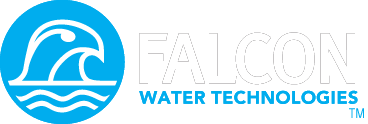As a B Corp, founded on the principle of ecological conservation, we at Falcon Waterfree Technologies love uniting with other like-minded parties who share our same ethical vision to improve the world we live in. With that being said, we were very excited when Joel Cesare, who is leading Santa Monica towards complete water self-sufficiency, granted us an interview to discuss his current work and his plan for the future of the city.
When did you start working as a Sustainable Building Adviser for the Office of Sustainability and Environment in the City of Santa Monica?
After getting my Masters in Environmental Science & Management from the Bren School at U.C. Santa Barbara, I worked in the Bay Area as a Sustainability Coordinator. The focus of my degree was towards energy efficiency, and the City of Santa Monica is well known as a leader in sustainability and achieving aggressive environmental goals. So, I deeply appreciated the fact that I have been able to expand my understanding of green building as a whole since I started working 2 years ago. I regulate and ensure the City of Santa Monica continues to demonstrate and improve its energy, water and carbon footprints.
Santa Monica has been investing in a sustainable city plan since 1994. What are the City’s strategies for water conservation in 2016?
For Residential, Santa Monica has created rebates, which cover three components: yard, parkway and harvesting rain water, which people can apply through our website http://water.smgov.net/
For Commercial and Multi-family, the City encourages the use of high-efficiency toilets, urinals (such as the Falcon Waterfree Technologies), plumbing fixtures and equipment rebates through SoCal Water Smart. We also offer free water audits. To request one, you can send us an email at savewater@smgov.net.
Two of the City’s largest sources of water usage are laundry facilities and hotels. What has been the City’s approach to reduce their water use?
We have been promoting the use of recirculating systems and water reuse. LOEWS Santa Monica Beach Hotel is one of our success stories. The hotel recently retrofitted its laundry system to use recycled water. The system also keeps the water temperature steady resulting in additional water and energy savings.
What about Stormwater and Urban Runoff solutions?
Storm water / urban runoff is considered Santa Monica’s main source of pollution in the bay. Santa Monica’s Urban Runoff Recycling Facility, known as “SMURRF”, is one of our best examples of dealing with polluted storm water/urban runoff to protect our coastal waters. The facility provides high quality water for reuse in toilet flushing and landscape irrigation. We consider moving pristine alpine water thousands of miles to flush a toilet indicative of an urban city disconnection with nature, and we want to change that.
Does Santa Monica have other initiatives in place to achieve water self-sufficiency?
Brackish & Seawater Reverse Osmosis is a customizable reverse osmosis (RO) water filtration systems that pull semi-salty water from the sand and turn it into fresh water.
Another initiative is sewage mining, which extracts suspended solids from wastewater before they become sludge, and reduces sludge formation, introducing a model for sustainable and environmentally friendly wastewater management.
Have there been any setbacks threatening the 2020 deadline?
No. In fact, we are more confident than ever. The drought regulation simply accelerated and stimulated our response to be water efficient. In fact, the city, has achieved self sufficiency several times in the past months. In December 2015, the city was self sufficient for 13 days, and was able to shut off water imports back again for 19 days in January.

